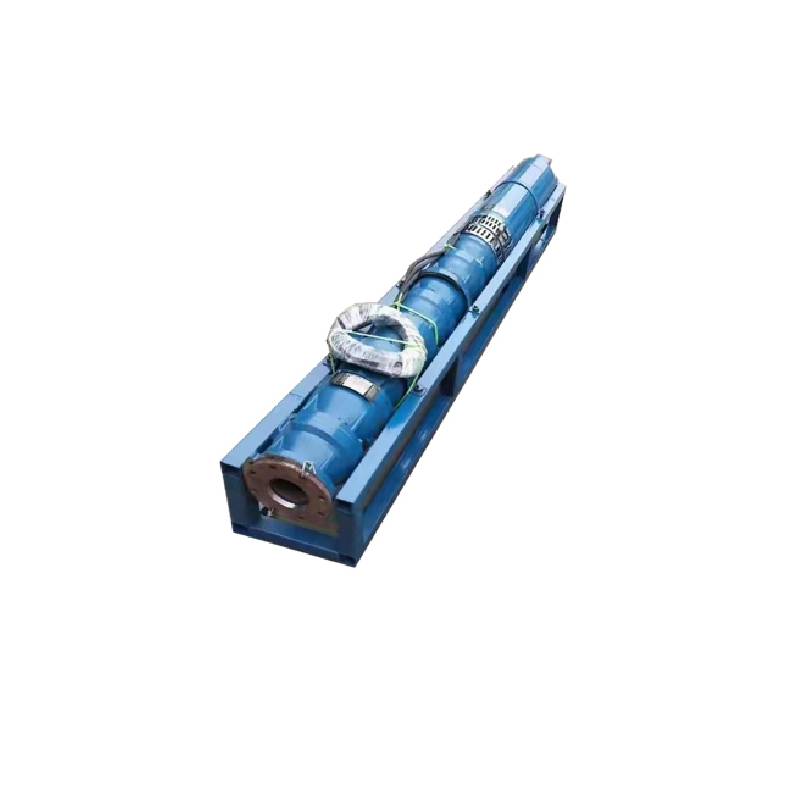Nov . 11, 2024 00:05 Back to list
Installation Guide for Deep Well Submersible Pumps in Water Systems
Deep Well Submersible Pump Installation A Comprehensive Guide
Deep well submersible pumps are crucial for water extraction from deep underground sources. Their reliable operation and efficiency make them a popular choice for agriculture, municipal water systems, and industrial applications. Installing these pumps requires careful planning and execution to ensure optimal performance and longevity. This article aims to provide a comprehensive guide to the installation of deep well submersible pumps.
Understanding Deep Well Submersible Pumps
A deep well submersible pump consists of a motor and a pump assembly that are submerged in the well water. The motor drives the pump, which pushes water to the surface via a discharge pipe. These pumps are specifically designed to operate underwater, preventing issues such as cavitation and overheating.
Planning the Installation
Before the installation process begins, thorough planning is essential. Consider the following steps
1. Site Assessment Evaluate the well site, including the depth of the well, water yield, and the quality of water. This assessment helps in selecting the right pump type and size.
2. Permits and Regulations Check local regulations regarding well drilling and pump installation. Necessary permits should be obtained prior to proceeding with the installation.
3. Choosing the Right Pump Selection of the correct pump depends on several factors, including the depth of the well, desired flow rate, and the specific application. Consult with a professional or a pump manufacturer to determine the best equipment for your needs.
4. Necessary Tools and Equipment Gather all required tools and equipment for installation, including wrenches, pipe fittings, safety gear, and a hoisting mechanism. An understanding of the pump specifications is also critical at this stage.
Installation Steps
Once planning is complete, the installation can begin
1. Well Preparation Ensure the well is free of debris and contaminants. A clean well is crucial for the pump’s efficiency and longevity.
deep well submersible pump installation

2. Lowering the Pump Using a hoist or a crane, carefully lower the pump into the well. Ensure the pump assembly is properly aligned to prevent unnecessary stress on the cables and pipes. As the pump descends, be cautious of any sudden movements that could cause damage.
3. Connecting the Discharge Pipe Once the pump is in position, connect the discharge pipe to the pump outlet. This pipe transports water to the surface and must be securely attached to prevent leaks.
4. Electrical Connections Carefully connect the pump’s electrical wiring to the control panel. Ensure that all connections are secure, waterproof, and comply with electrical codes. It's advisable to hire a licensed electrician for this step, as improper connections can lead to equipment failure or electrical hazards.
5. Testing the System Before finalizing the installation, conduct a test run. Activate the pump and monitor its operation. Check for unusual noises, vibrations, or leaks. Ensure the water flow is consistent with the pump specifications.
6. Final Adjustments and Securing the System After confirming that everything is functioning correctly, secure all connections and fittings. Make final adjustments to ensure the pump operates efficiently.
Post-Installation Considerations
Once the installation is complete, ongoing maintenance and monitoring are essential for the longevity of the pump system
1. Regular Inspections Perform routine inspections to check for wear and tear, leaks, and any signs of corrosion or damage.
2. Water Quality Testing Regularly test the water quality to ensure it meets safety standards. Contaminants can affect pump performance and pose health risks.
3. Scheduled Maintenance Implement a maintenance schedule that includes cleaning, lubricating moving parts, and testing electrical components to ensure the system operates optimally.
4. Consult Professionals For any issues beyond basic maintenance, consult with professionals who specialize in pump systems. They can provide valuable insights and services to prevent costly repairs.
Conclusion
Installing a deep well submersible pump is a significant investment that requires careful planning, execution, and ongoing maintenance. By following the steps outlined in this guide, individuals and organizations can ensure they select the right pump, install it correctly, and maintain it for years of efficient operation. Proper installation and regular upkeep will allow deep well submersible pumps to perform reliably, ensuring sustainable access to vital water resources.
-
Submersible Water Pump: The Efficient 'Power Pioneer' of the Underwater World
NewsJul.01,2025
-
Submersible Pond Pump: The Hidden Guardian of Water Landscape Ecology
NewsJul.01,2025
-
Stainless Well Pump: A Reliable and Durable Pumping Main Force
NewsJul.01,2025
-
Stainless Steel Submersible Pump: An Efficient and Versatile Tool for Underwater Operations
NewsJul.01,2025
-
Deep Well Submersible Pump: An Efficient 'Sucker' of Groundwater Sources
NewsJul.01,2025
-
Deep Water Well Pump: An Efficient 'Sucker' of Groundwater Sources
NewsJul.01,2025
-
 Submersible Water Pump: The Efficient 'Power Pioneer' of the Underwater WorldIn the field of hydraulic equipment, the Submersible Water Pump has become the core equipment for underwater operations and water resource transportation due to its unique design and excellent performance.Detail
Submersible Water Pump: The Efficient 'Power Pioneer' of the Underwater WorldIn the field of hydraulic equipment, the Submersible Water Pump has become the core equipment for underwater operations and water resource transportation due to its unique design and excellent performance.Detail -
 Submersible Pond Pump: The Hidden Guardian of Water Landscape EcologyIn courtyard landscapes, ecological ponds, and even small-scale water conservancy projects, there is a silent yet indispensable equipment - the Submersible Pond Pump.Detail
Submersible Pond Pump: The Hidden Guardian of Water Landscape EcologyIn courtyard landscapes, ecological ponds, and even small-scale water conservancy projects, there is a silent yet indispensable equipment - the Submersible Pond Pump.Detail -
 Stainless Well Pump: A Reliable and Durable Pumping Main ForceIn the field of water resource transportation, Stainless Well Pump has become the core equipment for various pumping scenarios with its excellent performance and reliable quality.Detail
Stainless Well Pump: A Reliable and Durable Pumping Main ForceIn the field of water resource transportation, Stainless Well Pump has become the core equipment for various pumping scenarios with its excellent performance and reliable quality.Detail
